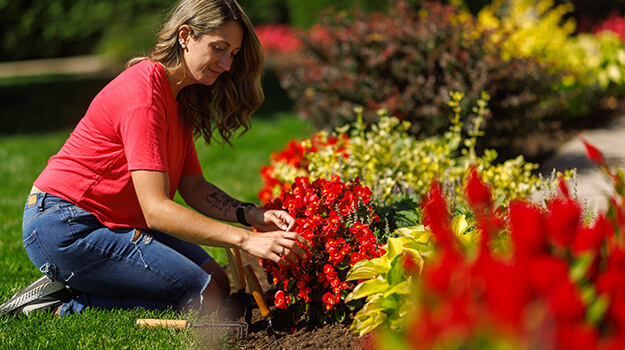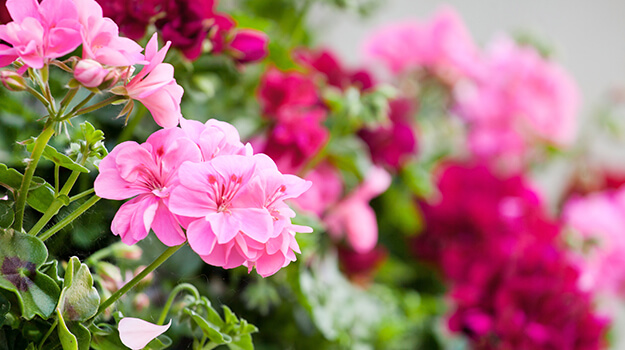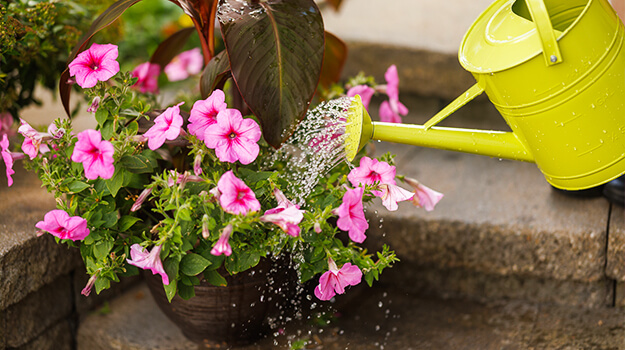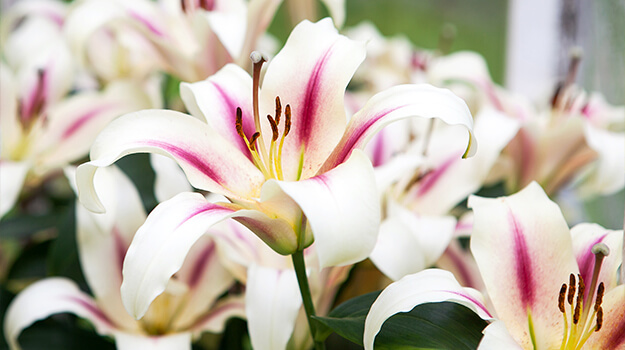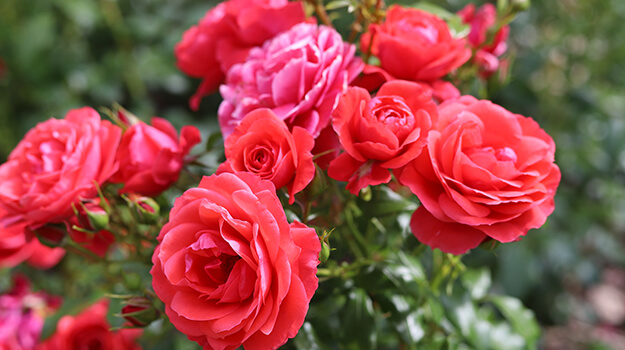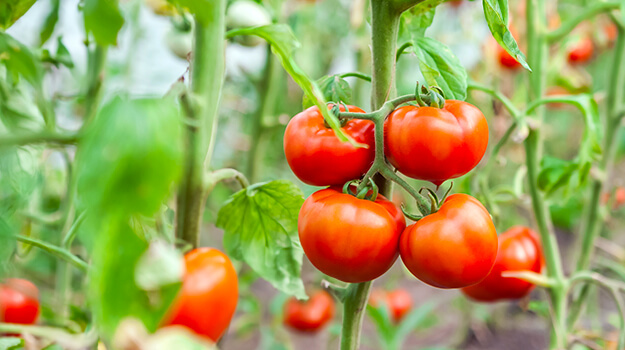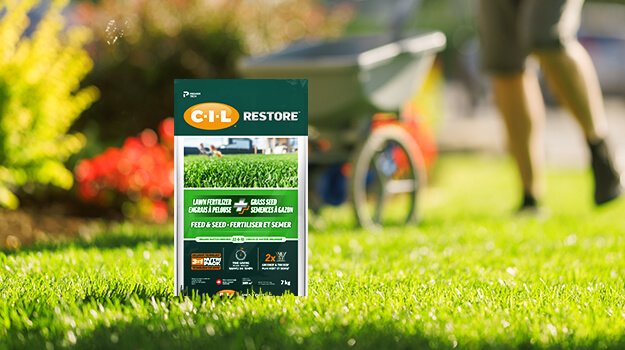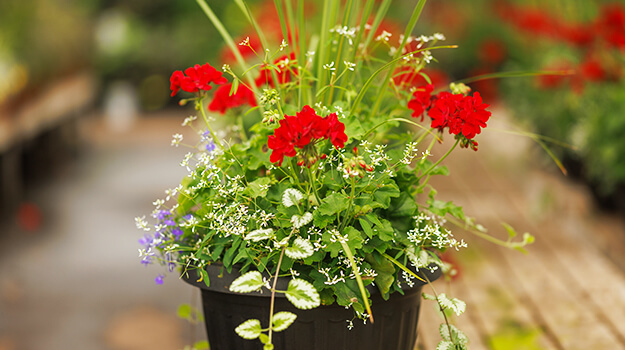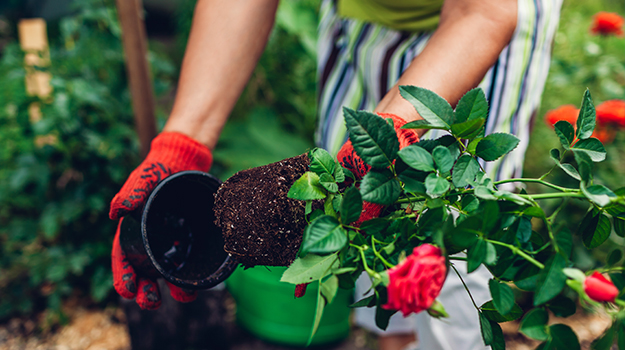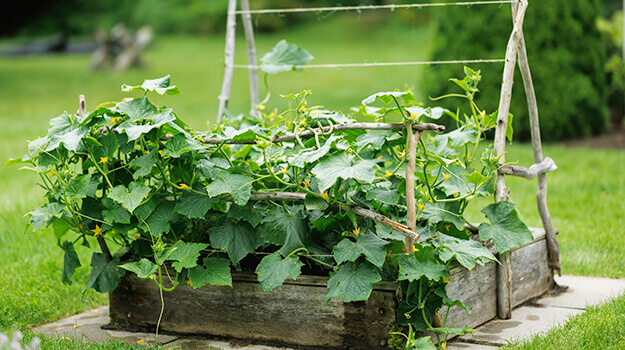- Why use mycorrhizae?
- Which plants to fertilize?
- When and how to fertilize?
- Fertilizing annuals grown in open ground
- Fertilizing plants grown in containers
- Fertilizing perennials grown in the ground
- Fertilizing trees and shrubs
- Fertilizing rose bushes
- Fertilizing the vegetable garden
- Fertilizing the lawn
The ground we walk on and plant in is more complex than it seems. It is made up of particles of rocks, water, air, organic matter and millions of living organisms, the majority of which are invisible to the naked eye.
These organisms are not only beneficial, but essential for the proper growth of plants and the production of fruits, vegetables and flowers. In addition to transforming organic matter into nutrients that plants can take in, they contribute to soil health and even play a role in pest control.
To survive and multiply, these living organisms need oxygen, water, heat, food and a virtually neutral pH.
Good practices that encourage their presence in the garden
- Add organic matter (compost)
- Fertilize with organic fertilizers
- Ban pesticides from our garden
- Correcting the pH when necessary
- Water efficiently
- Avoid working the soil deeply (certain micro-organisms such as mycorrhizae do not tolerate soil disturbance)
- Use mulch
- Add mycorrhizal fungi (beneficial fungi)
Why use mycorrhizae?
Mycorrhizae are microscopic fungi that attach to the ends of roots and live symbiotically with plants. The fungi feed on the sugars resulting from photosynthesis and in return allow the plant to absorb more water and minerals, protect it from pathogens attacking the roots and improve the structure of the soil.
Result: the plant tolerates transplantation better, develops more quickly afterwards, resists diseases and drought better and produces more fruits, vegetables or flowers.
Mycorrhizal fungi are everywhere in nature, but in our gardens, they have rarely survived over-worked soil, the use of synthetic fertilizers and the application of pesticides. You can remedy the situation by using soil for sowing, potting, gardening, etc. that includes mycorrhizae and/or by applying products from the MYKE range to the roots at planting time. A single contribution is enough for your plant to benefit from it throughout its life.
Recommended products:
- Outdoor & indoor potting mixes for sowing, potting and planting containing PRO-MIX mycorrhizae
- MYKE Tree and Shrub, MYKE Flower or MYKE Vegetable & Herb
Which plants to fertilize?
All plants can benefit from fertilizer at different times in their life. While some are quite greedy, others, such as trees and shrubs, will often be satisfied with an occasional application of compost and rapidly decomposing mulch.
Plants grown in containers usually need to be fertilized on a regular basis. This is because the frequent addition of water causes repetitive leaching which ends up depleting the soil (the nutrients are flushed out with the water through the drainage holes).
Whether grown in the ground or in a pot, some annuals are exceptions to the rule. For example, cosmos, marigolds and nasturtiums flower more when grown in poor soil. As for perennials, you can also obtain better results by avoiding fertilizing yarrow, blue gold thistle, sage, veronica, liatris, rudbeckia, lupine, garden iris, moss phlox, reed grass.
When and how to fertilize?
To be beneficial, fertilizers must be applied at the right time. Fertilizing at the wrong time risks burning the roots, affecting plant growth or harming fall hardening, a natural process that allows plants to survive the winter.
Although this can vary from one plant to another and depending on growing conditions, generally fertilize in spring and/or summer when the plants are actively growing. You should always respect the recommended doses, avoid fertilizing during heatwaves and stop giving fertilizer from mid-July or the end of July.
You will find more details depending on the type of plants in the following sections. To ensure you don't forget anything, you can also download and print the suggested reminder guide.
Pro tip: For all flowering plants, avoid fertilizers that are too rich in nitrogen (higher first number), which stimulates green growth to the detriment of flowering.
Fertilizing annuals grown in open ground
When planting: Amend the soil in the flower beds with a garden soil containing a slow-release fertilizer, sphagnum peat moss, which helps retain water, and mycorrhizae, which promote the development of the root system. Distribute a granular fertilizer at their feet.
In season: As soon as they are in flower, lighty fertilize the flower beds every week or two until fall. This will stimulate the growth of plants, meet the needs of the most demanding plants and promote spectacular flowering.
Recommended products:
- C-I-L Composted Manure
- Garden fertilizer with an organic base such as PRO-MIX 9-16-16
- Organic garden fertilizer such as PRO-MIX 4-4-8
Fertilizing plants grown in containers
When planting: Use a specific potting mix that helps retain water and nutrients. A good potting mix contains sphagnum peat moss, perlite, a slow-release fertilizer and mycorrhizae.
In season: Fertilize plants grown in containers once a week until mid-September (end of July for perennials).
Recommended products:
- PRO-MIX Organic Vegetable & Herb Mix
- PRO-MIX Premium Potting Mix
- Organic-based garden fertilizer for flowers such as PRO-MIX 9-16-16
- Organic garden fertilizer such as PRO-MIX 4-4-8
Note: Take a break during periods of extreme heat, and resume when temperatures return to normal.
For more information, read How to have beautiful planters all season long
Fertilizing perennials grown in the ground
When planting: Amend the soil in the flower beds with a garden soil containing a slow-release fertilizer, sphagnum peat moss, which helps retain water, and mycorrhizae, which promote the development of the root system.
In season: Fertilize well-established plants early in the season with a time-release fertilizer such as compost or granular fertilizer. During the season, a fast-acting liquid fertilizer is used to reinvigorate plants that are showing signs of deficiency or exhaustion. Never fertilize after the end of July.
Adding a rapidly decomposing mulch also provides nutrients to your plants while discouraging weeds (leave a clear space at the base of the plant to allow it to expand).
Recommended products:
- PRO-MIX Organic Vegetable & Herb Mix
- C-I-L Composted Manure
- Organic-based garden fertilizer such as PRO-MIX 9-16-16
- Organic garden fertilizer such as PRO-MIX 4-4-8
- C-I-L Mulch
Fertilizing trees and shrubs
Well-established trees absorb some of the fertilizer from the lawn and surrounding flower beds. If necessary, trees can be fertilized in the spring, just before bud burst, or sometimes in the event of damage, in the fall when the leaves change colour.
Applying compost every 3 to 5 years or a rapidly decomposing mulch is usually sufficient. Shrubs that are damaged or have undergone rejuvenation pruning will benefit from an application of fertilizer, ideally before bud burst.
Recommended products:
- PRO-MIX All Purpose Organic Garden Fertilizer 7-3-3
- PRO-MIX All Purpose Organic-based Garden Fertilizer 20-8-8
- C-I-L Organic-based Tree & Shrub Plant Food 18-8-8
Fertilizing rose bushes
When planting: Amend the soil with a garden potting mix containing a slow-release fertilizer, sphagnum peat moss, which helps retain water, and mycorrhizae. In the year of planting, fertilize after the first flowering.
The following years:
- In May, use a nitrogen-rich formula like PRO-MIX Organic-based Multi-purpose Garden Fertilizer 12-6-6.
- At the beginning of July, use a concentrated phosphorus formula such as PRO-MIX Organic-based Premium Garden Fertilizer 9-16-16 to promote the formation of flower buds.
For more information, read How to plant roses
Fertilizing the vegetable garden
When planting: For your vegetable plants, choose a quality organic potting soil containing sphagnum peat moss, organic fertilizer and mycorrhizae.
In season: For an optimal harvest, apply an organic-based garden fertilizer every 3 to 4 weeks when growing in the ground, or every two weeks when growing in containers.
Recommended PRO-MIX products:
- PRO-MIX Organic Vegetable & Herb Mix
- PRO-MIX Organic Garden Fertilizer for Tomatoes, Vegetables & Fruits 4-4-8
- PRO-MIX Organic-based Garden Fertilizer for Tomatoes, Vegetables & Fruits 9-16-16
For more information, read 12 tips for a more productive vegetable garden
Fertilizing the lawn
Apply a slow-release fertilizer at least twice a year, in spring (April-May depending on the region) and fall (late August to October depending on the region). Application is made on a dry lawn. By applying 24 or 48 hours before rain, you avoid having to water. Do not apply fertilizer if it is very hot (over 28 °C) or if it has not rained for weeks.
Recommended C-I-L products:
- C-I-L Restore Feed & Seed Lawn Fertilizer & Grass Seed (feed and seed in one step)
- C-I-L Bio-Weed & Feed Lawn Food 9-0-0 (prevents the germination of weeds)
- C-I-L Iron+ Lawn Food Spring & Summer 18-0-8 and C-I-L Fall Lawn Food 12-0-18
To ensure you don't forget anything, click here to view, download or print our reminder cards.

